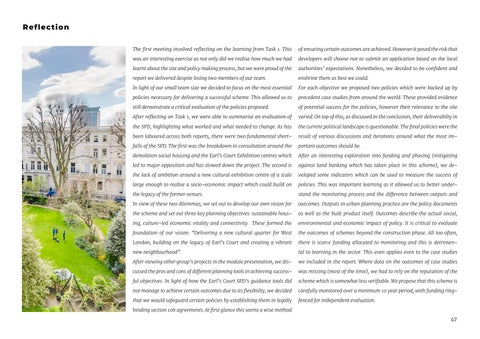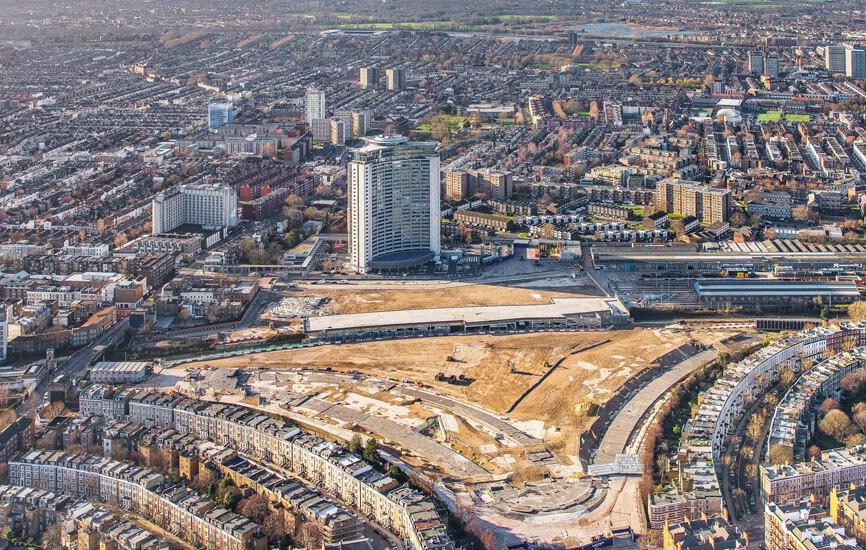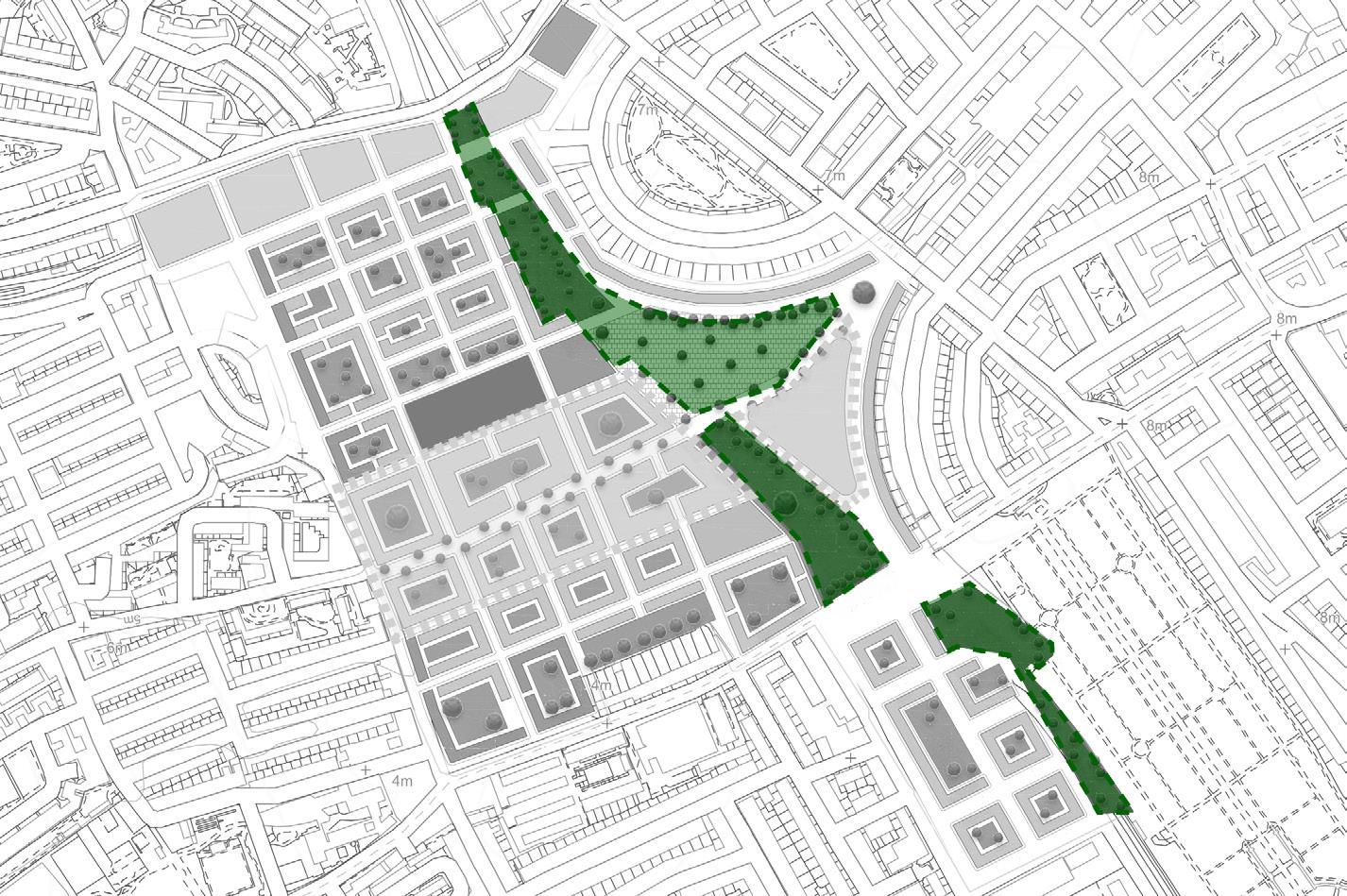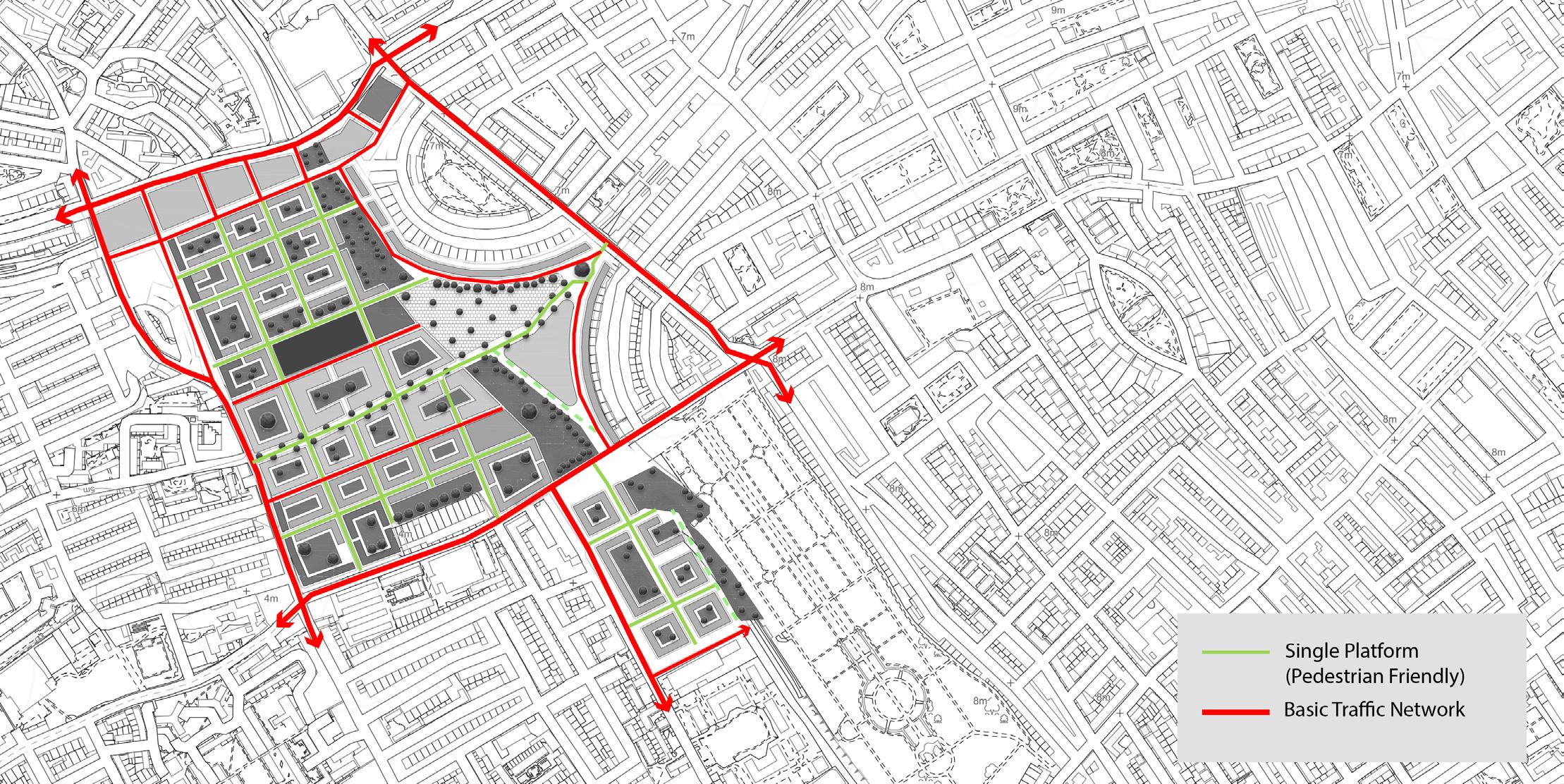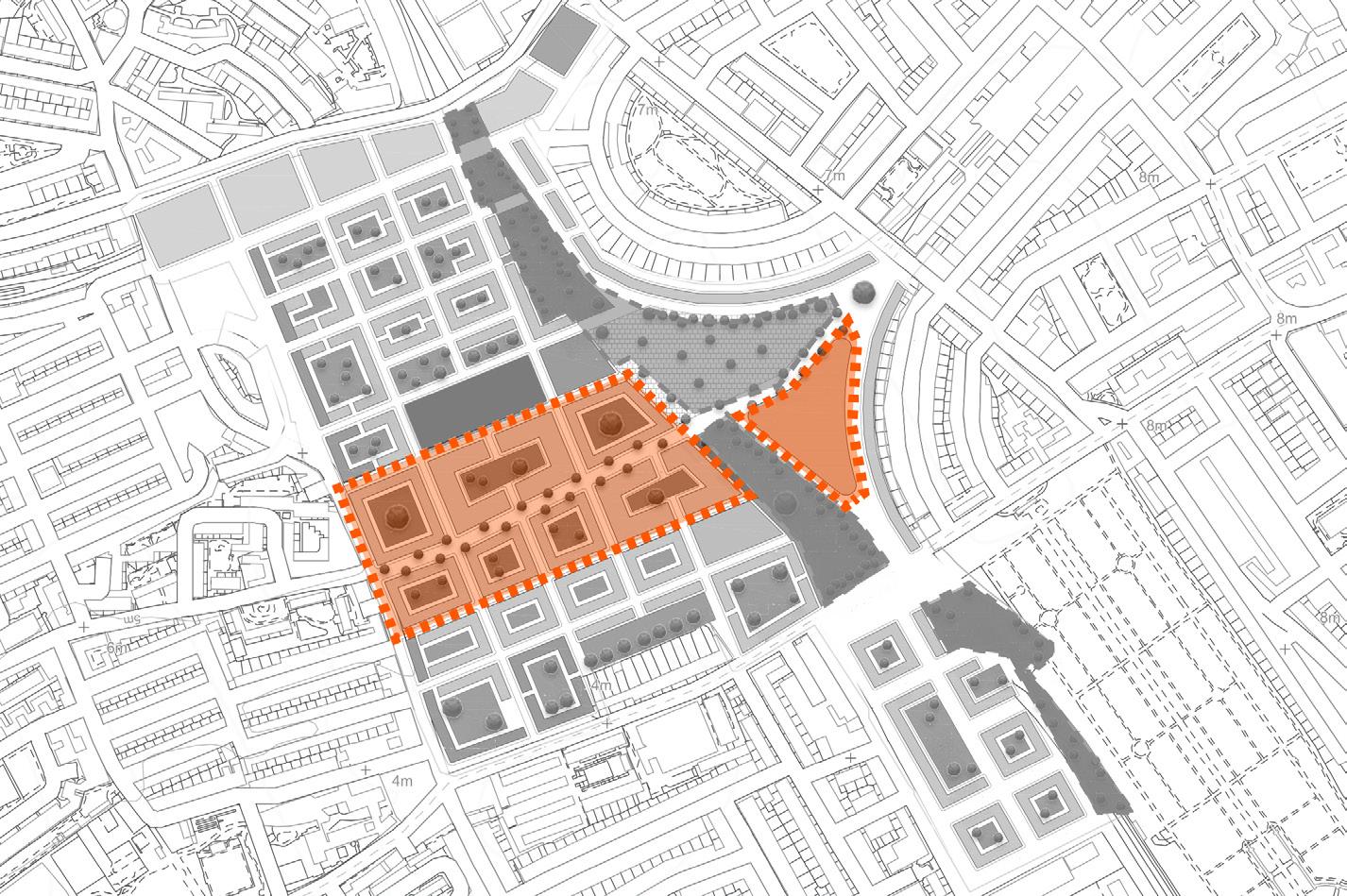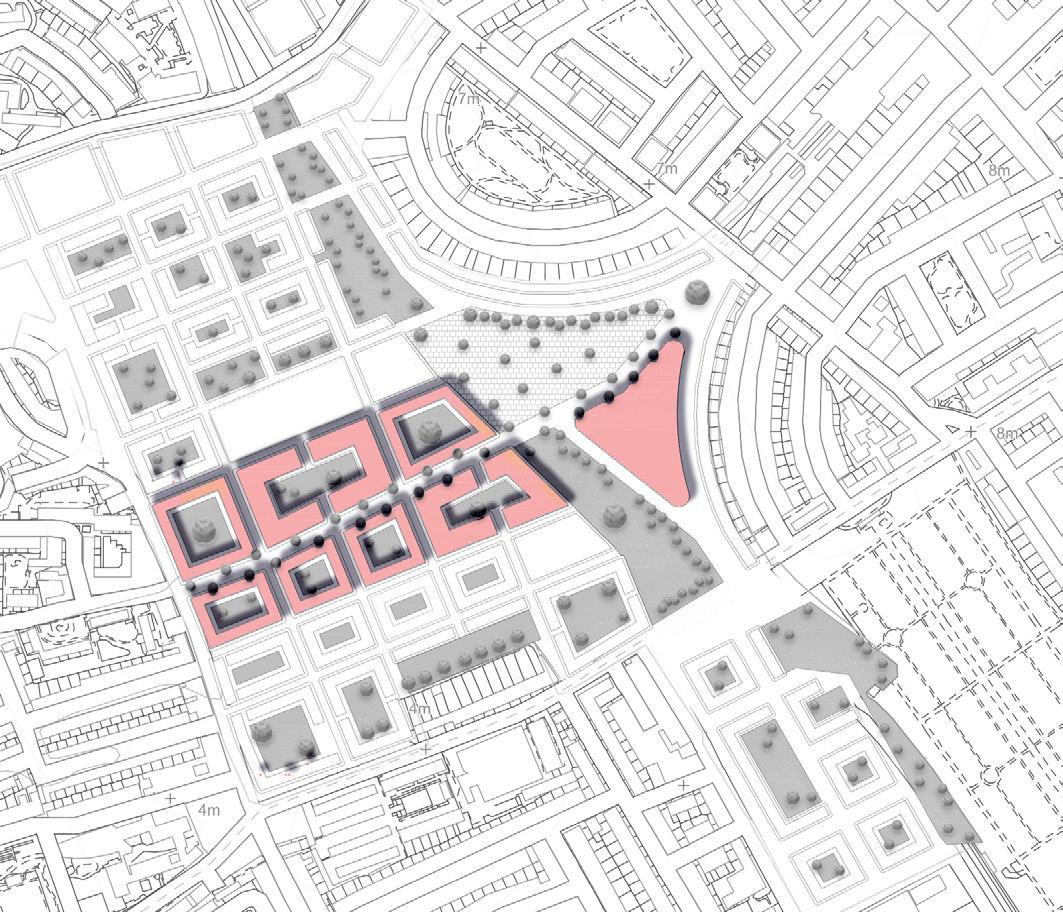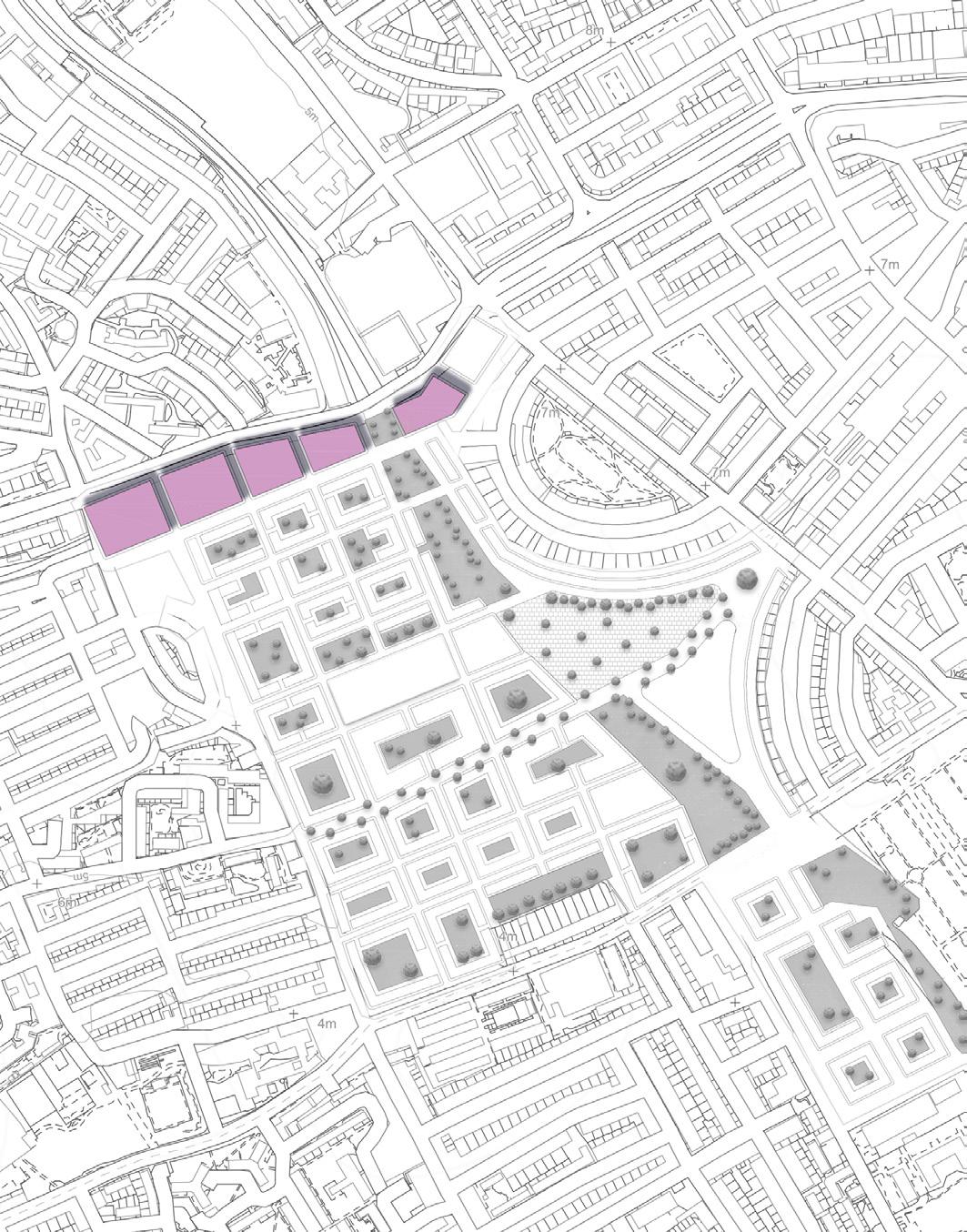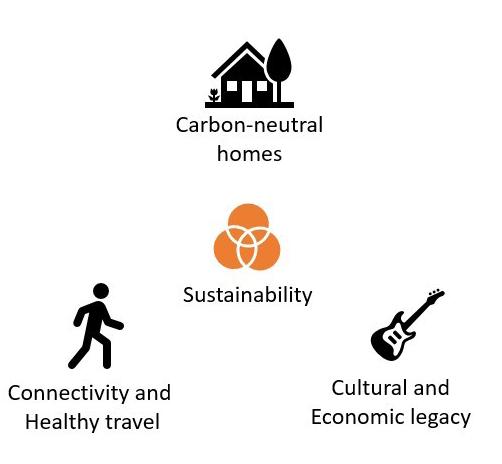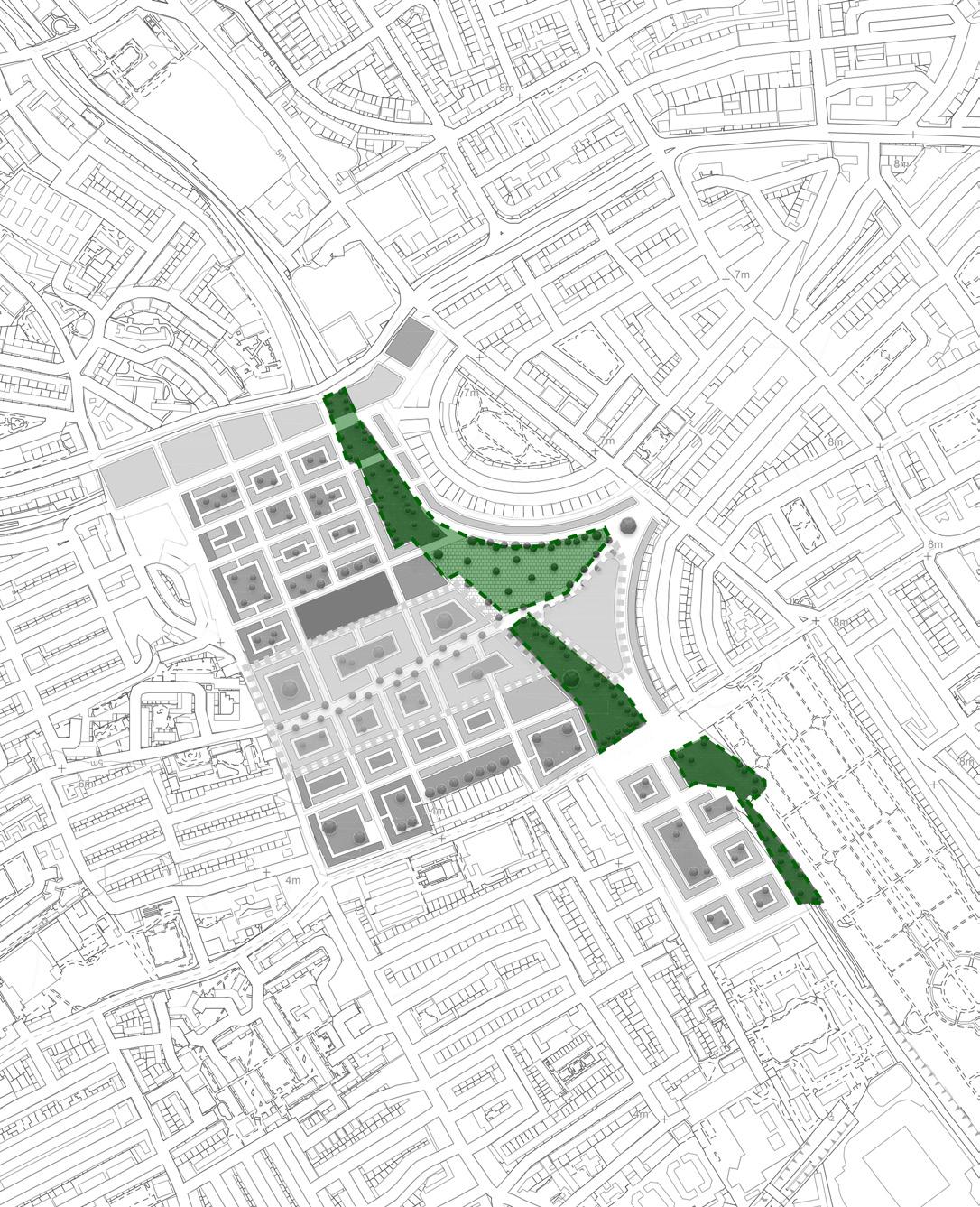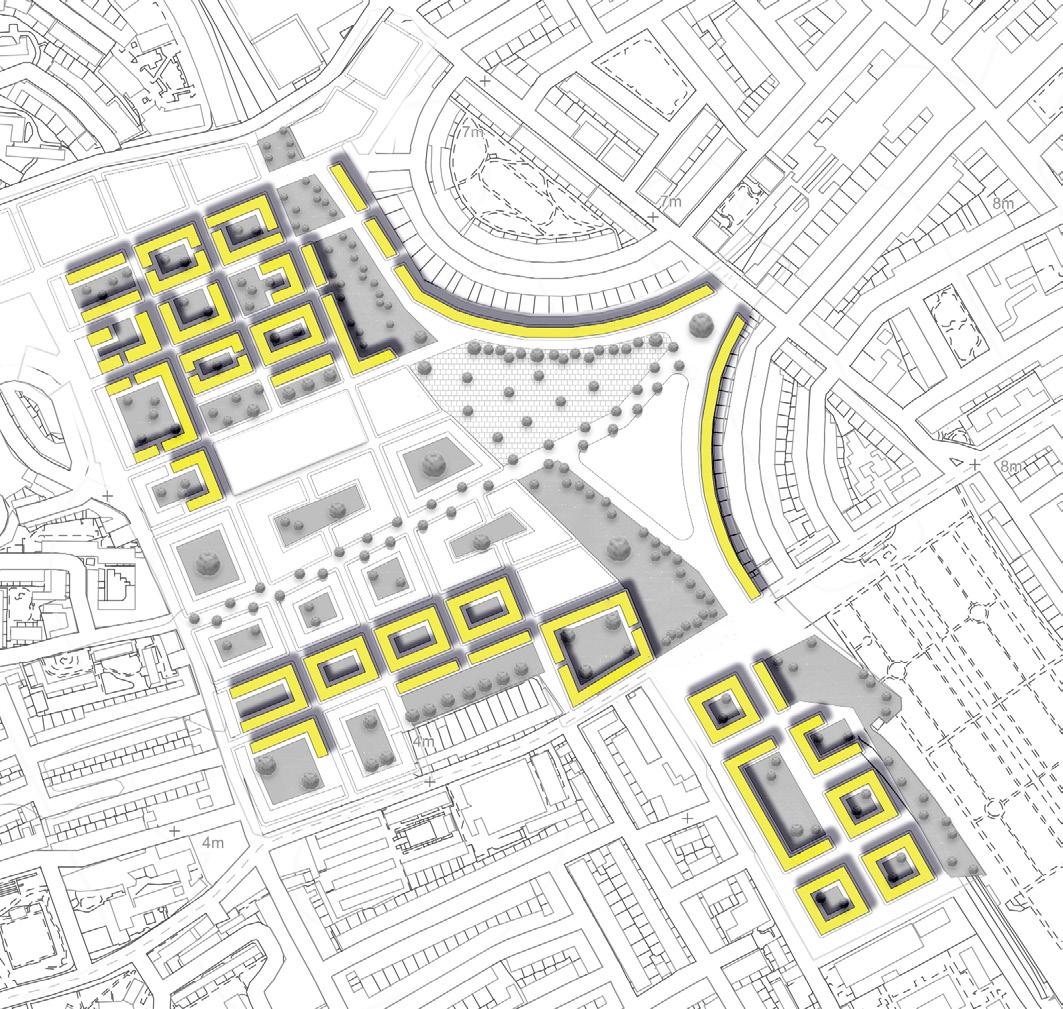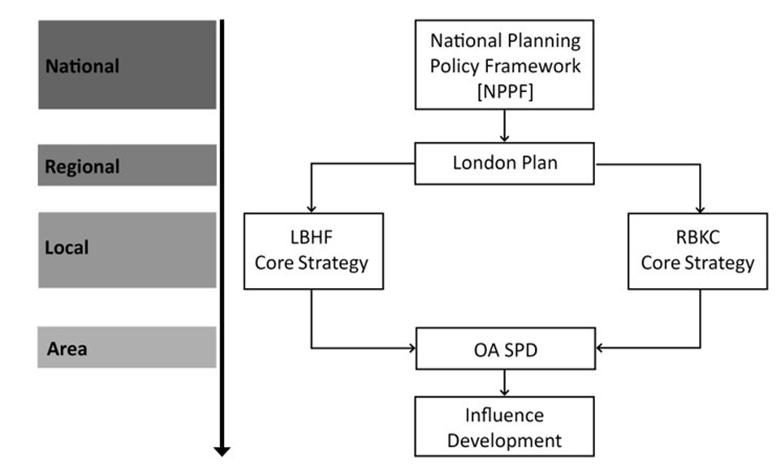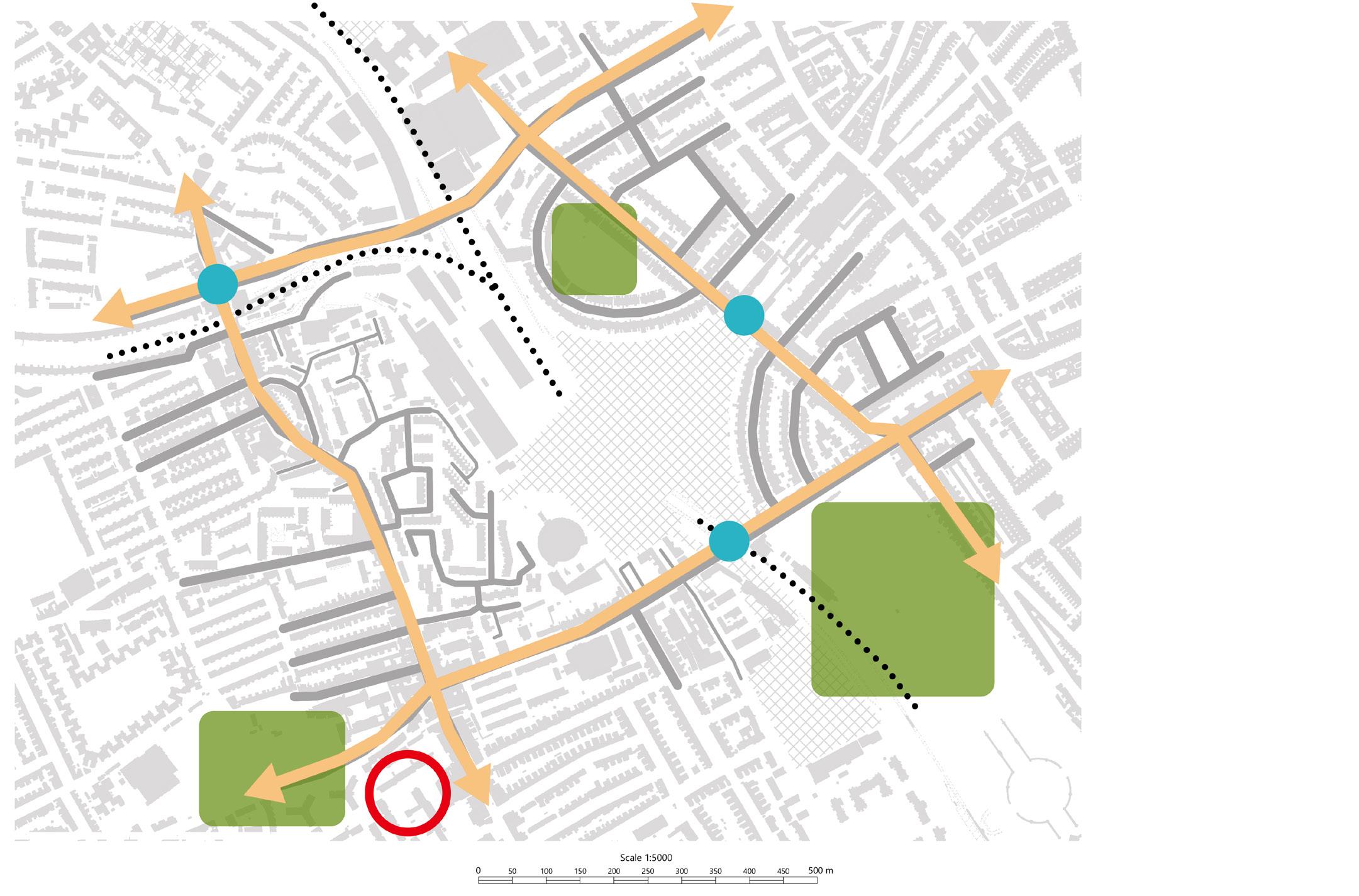R eflec t io n The first meeting involved reflecting on the learning from Task 1. This
of ensuring certain outcomes are achieved. However it posed the risk that
was an interesting exercise as not only did we realise how much we had
developers will choose not to submit an application based on the local
learnt about the site and policy making process, but we were proud of the
authorities’ expectations. Nonetheless, we decided to be confident and
report we delivered despite losing two members of our team.
enshrine them as best we could.
In light of our small team size we decided to focus on the most essential
For each objective we proposed two policies which were backed up by
policies necessary for delivering a successful scheme. This allowed us to
precedent case studies from around the world. These provided evidence
still demonstrate a critical evaluation of the policies proposed.
of potential success for the policies, however their relevance to the site
After reflecting on Task 1, we were able to summarise an evaluation of
varied. On top of this, as discussed in the conclusion, their deliverabilty in
the SPD, highlighting what worked and what needed to change. As has
the current political landscape is questionable. The final policies were the
been laboured across both reports, there were two fundamental short-
result of various discussions and iterations around what the most im-
falls of the SPD. The first was the breakdown in consultation around the
portant outcomes should be.
demolition social housing and the Earl’s Court Exhibition centres which
After an interesting exploration into funding and phasing (mitigating
led to major opposition and has slowed down the project. The second is
against land banking which has taken place in this scheme), we de-
the lack of ambition around a new cultural exhibition centre of a scale
veloped some indicators which can be used to measure the success of
large enough to realise a socio-economic impact which could build on
policies. This was important learning as it allowed us to better under-
the legacy of the former venues.
stand the monitoring process and the difference between outputs and
In view of these two dilemmas, we set out to develop our own vision for
outcomes. Outputs in urban planning practice are the policy documents
the scheme and set out three key planning objectives: sustainable hous-
as well as the built product itself. Outcomes describe the actual social,
ing, culture-led economic vitality and connectivity. These formed the
environmental and economic impact of policy. It is critical to evaluate
foundation of our vision: “Delivering a new cultural quarter for West
the outcomes of schemes beyond the construction phase. All too often,
London, building on the legacy of Earl’s Court and creating a vibrant
there is scarce funding allocated to monitoring and this is detrimen-
new neighbourhood”.
tal to learning in the sector. This even applies even to the case studies
After viewing other group’s projects in the module presentation, we dis-
we included in the report. Where data on the outcomes of case studies
cussed the pros and cons of different planning tools in achieving success-
was missing (most of the time), we had to rely on the reputation of the
ful objectives. In light of how the Earl’s Court SPD’s guidance tools did
scheme which is somewhat less verifiable. We propose that this scheme is
not manage to achieve certain outcomes due to its flexibiilty, we decided
carefully monitored over a minimum 10 year period, with funding ring-
that we would safeguard certain policies by establishing them in legally
fenced for independent evaluation.
binding section 106 agreements. At first glance this seems a wise method 47
